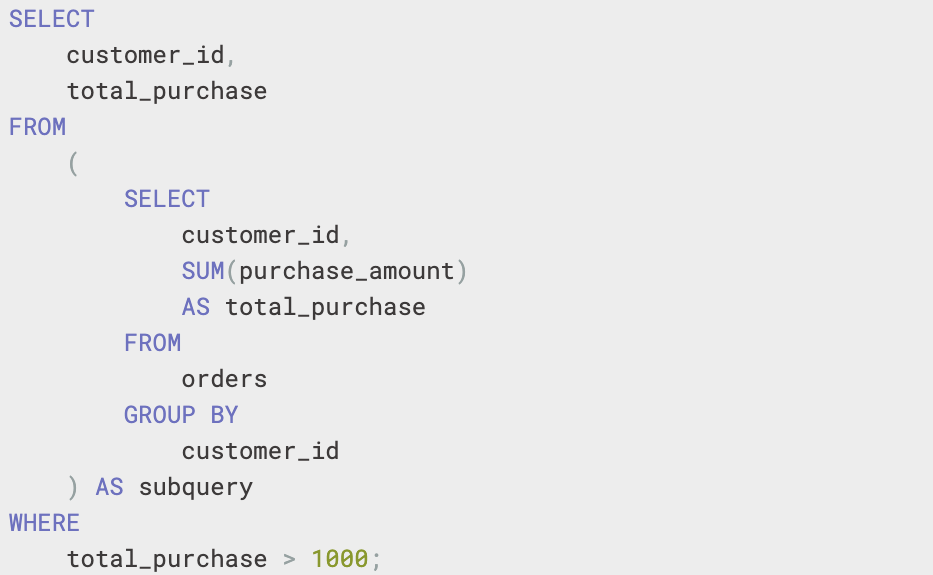
The latest developments in AI and data learning:
🖋️ An inkblot test was given to compare AI and human perception.
📚 Lesson of the Week: SQL subqueries.
🔍 AI-powered search engine Perplexity says it’s building its own web browser.
🗣️ Weekly Tech Tip: Alexa Commands & Features
🚀 What’s New: Easily share simulations with a link.
📗 Book of the Week: “Steve Jobs” by Walter Isaacson.
Get a Quick Lesson In
How AI Interprets an Inkblot Test
The Rorschach inkblot test has long been a tool for analyzing human perception—but what happens when AI takes it?
While humans project personal experiences and emotions onto the images, AI relies solely on pattern recognition and training data.
This experiment provides fascinating insights into AI and data learning, showcasing how artificial intelligence interprets patterns differently from humans.
The findings offer insight into both AI’s limitations and the fascinating ways our minds construct meaning.
Lesson of the Week
This week’s lesson brings information on SQL subqueries, sourced from our skill, “Citizen’s Guide to SQL.”
Question of the Week:
What best describes the output of the subquery?
Select one:
A) The customer_id and purchase_amount for each individual order.
B) The total purchase amount for each customer.
C) The total purchase amount for all customers combined.
See if you’re right–the answer is at the bottom!
A New AI Browser Is Coming
Perplexity AI is shaking up the browser game with Comet, its upcoming AI-powered web browser.
With a rapidly expanding product lineup—including a deep research tool and an AI assistant—the company is making bold moves in tech.
Backed by $9 billion in valuation and over 100 million weekly searches, Perplexity is gaining traction, but legal battles with publishers over alleged content scraping could pose a serious challenge.
With its rapid advancements, Perplexity is shaping the future of AI and data learning by integrating AI-powered search with real-time information retrieval.
If this interests you, you can join their waitlist here.
Weekly Tech Tip
Alexa Commands & Features
-
New Features: “Hey, Disney” for games, Alexa Voice Remote Pro to find lost remotes, Fire TV Cube voice controls, and Echo Auto (2nd Gen) for hands-free driving assistance.
-
Smart Home & Shopping: Schedule lights (“Alexa, turn off in 5 min”), check in at Whole Foods, and shop visually (“Alexa, show me a green skirt”).
-
Essential Commands: Control TV, music, smart home, calls, to-dos, shopping, news, and weather.
-
Pro Tips: Use Follow-Up Mode for multiple commands, multi-command strings (“Alexa, play jazz and dim lights”), and Alexa Skills for extended functionality.
Alexa’s latest features advance smart home automation, further integrating AI and data learning into daily life.
What's New
Teachers can now share a direct link to a simulation assignment–available to Applied Data Science clients.
Applied Data Science clients can now explore new AI and data learning experiences through shareable simulations.
If you’re interested in our Applied Data Science course, please reach out to support@quanthub.com to learn more!
Book of the Week
Walter Isaacson’s “Steve Jobs” is a bestselling biography that offers an in-depth exploration of the Apple cofounder’s life, personality, and impact on multiple industries.
Based on extensive interviews, the book presents an unfiltered look at Jobs’ drive for perfection, his innovative spirit, and his complex relationships with colleagues, competitors, and family.
The biography serves as both an inspiring and cautionary tale about leadership, creativity, and the intersection of AI and data learning in technology and design.
Additional Tidbits
Anthropic launches its best AI model yet: Claude 3.7 Sonnet and Claude Code
Chinese rivals to Musk’s Starlink accelerate race to dominate satellite internet
Apple’s iPhone 17 lineup is looking a little Pixelated
Epilepsy AI tool detects brain lesions doctors miss
Apple responds to tariff threat with a $500 billion US investment plan
Grok blocked results saying Musk and Trump ‘spread misinformation’
Jump Back Into QuantHub

Lesson of the Week Answer:
B) The total purchase amount for each customer.




